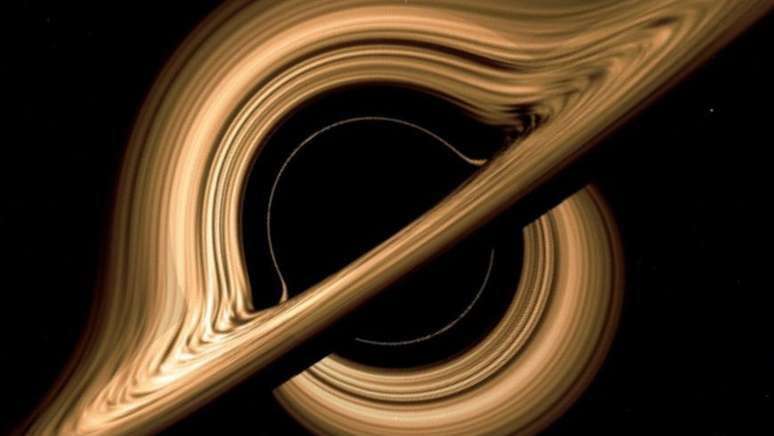The information paradox in black holes, one of the major problems of modern physics, finds a solution with the addition of quantum gravity
The authors of a new study say they have solved the information paradox, one of the most difficult theoretical problems in physics in decades. But there’s a caveat: the solution relies on the graviton, a particle of quantum gravity whose existence has yet to be proven.
- The supermassive black hole may have “killed” its own galaxy
- This black hole is 30 billion times more massive than the Sun
The information paradox
Proposed by Stephen Hawking in the 70s, the information paradox is a consequence of the black hole evaporation, an idea also presented by this same physicist. This question proved so challenging that Hawking himself died 40 years later without coming to a conclusion.
Black holes, according to Hawking, evaporate because they emit radiation in the form of thermal energy, which became known as Hawking radiation. If the energy released implies a loss of mass (according to the formula E=mc²), it means that the black hole will shrink until it disappears one day.
However, Hawking radiation, due to its thermal nature, cannot carry information. If all that is left of a black hole after it evaporates is this radiation, then all information about the black hole’s previous state will be lost.
This is a serious violation of quantum laws, which state the following: a particle’s information cannot be destroyed, and an object’s final state must always reveal clues about its initial state. For example, we might discover that a handful of ashes was a sheet of paper before it was burned.
If Hawking radiation is real… e it probably is —, where does the information from the particles “devoured” by the black hole go in the course of its history? Where is the information that will say that the initial state of the black hole is a massive star?
Solution to the problem
One possible answer to the paradox is that the black hole has a way of keeping information safe. But where? Some theorists have proposed that radiation around black holes, dubbed “quantum hairs,” can store information.
It turns out that, for the theory of Albert Einstein, black holes can only carry three types of information: mass, spin, and charge. In other words, there is no hair, as Professor John Archibald Wheeler proved in the 1960s with the “no hair theorem” (yes, the physicists’ dilemma is whether black holes are bald or hairy).
OR Stephen Hawking’s latest work, written with his colleagues such as Hawking, Sasha Haco and Andrew Strominger and published after his death, defends another proposition: that of “soft hair”. Now, the new study takes this idea even further.
In 2022, the team already argued that black holes have hair in the form of a unique quantum “fingerprint”—that is, one black hole’s hair will always be different from another’s hair—in the gravitational fields that surround it. In the most recent study, the authors used the hypothetical graviton, the particle of quantum gravity.
According to Xavier Calmet, professor of physics at the University of Sussex and lead author of the study, these “quantum gravitational corrections” are “crucial to the evaporation of black holes”. With the graviton at play, the study shows how Hawking radiation is modified “in such a way that this radiation becomes non-thermal.”
With this result, everything about Hawking radiation can be seen differently, with particles that can, yes, carry information. This is very impressive and could solve the paradox once and for all.
Unfortunately, despite the authors’ optimism, there is still one very important step to prove this conclusion. Researchers have been trying to observe the graviton for some time, since the information paradox would not be the only problem to be solved: any incompatibility between general relativity and quantum mechanics will finally be overcome.
The study article was published in Physical Review Letters.
Source: Physical Review Letters
Trending on Canaltech:
- Have you ever seen the surface of a strawberry under a microscope? prepare your stomach
- The blood test can detect more than 50 types of cancer
- What are the benefits of direct currency conversion between Brazil and China?
- The artist uses artificial intelligence to create selfies of Jesus, Napoleon and other historical figures
- Xiaomi announces Poco C51 with monstrous battery and low price
Source: Terra
Rose James is a Gossipify movie and series reviewer known for her in-depth analysis and unique perspective on the latest releases. With a background in film studies, she provides engaging and informative reviews, and keeps readers up to date with industry trends and emerging talents.




![A Better Life Preview: What’s in store for Thursday 30 October 2025 Episode 453 [SPOILERS] A Better Life Preview: What’s in store for Thursday 30 October 2025 Episode 453 [SPOILERS]](https://fr.web.img3.acsta.net/img/19/c5/19c512af3e998cd1e6067fd0edf5e894.jpg)

